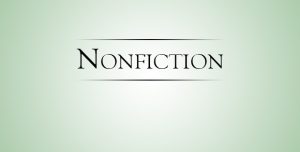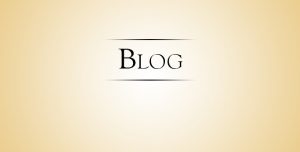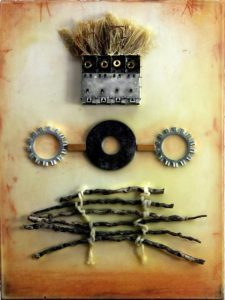
SMELLS LIKE MOSS MAN
by Christine M. Lasek
Like the green slime rimming the crick behind the house where your best friend grew up.
Like the brown and decay of November leaves choking sewer grates.
Like the mosquito-thick drainage ditch in your parents’ subdivision in the dead of summer.
*
In 2005, it seemed like everyone on the University of Michigan’s campus carried around Nalgene water bottles. This was before polycarbonate plastics were thought to leach endocrine disruptors, before fixatives were known to cause chromosomal errors in cell division, before BPAs were a household name. Everyone had the same 32-ounce, wide-mouth bottle made of grayed-out plastic, with liberally scarred screw-top lids in blue or orange or white. My coworker Trace’s bottle had telltale signs of use—dings in the plastic, a section of the bottom scraped and flattened from when he dropped it on the cement.
Trace would fill his bottle from the office faucet, sometimes three times a day. He said this was a habit left over from when he attended Arizona State, where the heat was dry and sucked moisture out of your body, and you would pass out from heat stroke before you even realized you were thirsty and had been sweating all day.
I suspected the water guzzling was to ensure several trips to the bathroom, to break up the monotony of being a content pusher for the online arm of eight Michigan newspapers.
These refillings had a pattern. Trace would sigh. Stretch. Grab his bottle. Lumber to the kitchen. At 6’3”, he was a particularly good lumberer—stooped shoulders, the slow walk of someone who could always rely on his own stride length to keep up with everyone else’s short legs. His uniform of khaki cargo shorts and Crocs made him strangely quiet against the phlegmy hum of mildewy air conditioning and Dell-computer keyboard clacking.
As he walked by my desk to the kitchen, he stopped and sniffed the mouth of his bottle. Turning to Steve, our boss, he said, “Smells like Moss Man.”
I looked at Steve, two years younger than me and with a mop of blond hair that hadn’t seen a comb in days, for some clue as to what Trace meant. What was Moss Man?
Steve gave a knowing smile. He picked up his own Nalgene bottle and sniffed its contents. “I think you should use some soap on that thing, man,” was all he said before returning to his web surfing.
I didn’t have a Nalgene bottle to sniff for reference. My sixteen-ounce disposable bottle of Dasani water was one of the many things that separated the woman from the boys in my office. Others included my business casual attire, my boredom for our work, and my vagina. I would learn during my two years working with Steve and Trace that the glass ceiling was alive and well—my unwillingness (at twenty-five) to attend parties where the primary form of entertainment was a beer pong tourney, my lack of a Nintendo Wii, my indifference to all Michigan State University sports, would manifest into being passed over for raises and promotions. The powers-that-be wanted a “bro.”
I wasn’t going to ask Trace if I could smell his bottle, and after a year and a half of being one of the only women in an office full of twenty-something-year-old boys with journalism degrees, I knew better than to ask him or Steve to explain.
So I did what any good web journalist would do in my situation—I Googled Moss Man.
*
Moss Man is a fictional character from the popular Masters of the Universe franchise.[1] [He] is a plant-based hero who can manipulate plant matter, causing flowers to grow but also causing tidal waves of moss and vegetation.
The Moss Man figure came with a pine-like scent, textured fur-like moss, and was formed from the same mold as Beast Man. [2]
Moss Man was originally conceived by Mattel in the 1980s as a heroic foe for Stinkor, both of which had action figures which were scented. But since the latter never appeared in the original series, the two only come face-to-face in the mini-comic “The Stench of Evil!”[3]
*
As the eldest of three girls, my knowledge of boys’ toys was limited. I only knew He-Man because he was She-Ra’s twin brother, separated at birth. She-Ra: Princess of Power was on after school, and like other children of the 1980s, television was my babysitter—I never missed an episode.
And despite the allure of my Peaches ‘n Cream and Sweetheart Barbie dolls, I liked my She-Ra action figures best. I had Frosta and Catra. I was bitterly jealous of the little girl down the street who had the Crystal Castle, complete with magic key and rising-action tower.
But even in 1987, I knew Bow, She-Ra’s love interest and the only male action figure, was lame—lamer than helmet-hair Ken with the permanent boxer shorts. Bow had tight blue plastic pants with a gold-painted breastplate but no shirt. Instead of the rotating hip action that came standard on the other She-Ra action figures, Bow had a heart in the center of his chest that “beat” when you pressed the button on his back.
Eddie Wheeler lived down the street and our mothers were friends, which meant we played together sometimes. He had the Castle Grayskull and an army of He-Man figures. He-Man, with bulging biceps and Conan the Barbarian’s fashion sense. Fisto, a tiny Chuck Norris with an over-sized fist. These ’roided-up behemoths would swoop in to rescue my delicate She-Ra dolls, sometimes beating up Bow just for being such a wuss.
None of Eddie’s toys had been covered in green fur. Even nineteen years later, I think I would remember if one of the He-Men had made my hand smell weird.
*
I find male camaraderie fascinating—it’s not double-edged like its female counterpart. While I know my girlfriends would offer up internal organs if I needed one to survive, I also expect them to reassure me that, “No, those tapered-leg khaki pants without back pockets don’t make your butt look big.” Beth, Laura, and I are most likely still friends because we decided not to live together during our senior year of college.
My fiancé, on the other hand, is still friends with the same six guys he hung around with in high school. At various times over the years, they have lived together, worked together. Girls were mostly transient, until everyone hit their mid-twenties—when rings appeared on girlfriends’ fingers and everyone settled into jobs, houses, and adulthood.
Ryan and I spent many Saturday nights with these guys—at Easy Street, a bar in downtown Toledo, with dark wood furniture, Tiffany-style lamps, and a jukebox in the back. Ryan, Mike, Jason, Andy, Doug, and Dave were slowly drinking their way through Easy Street’s catalog of beers in order to be inducted into the illustrious Hall of Foam—the honors and benefits occurring thereto including a special Hall of Foam mug, a T-shirt, and your name engraved on a plaque.
They decided to drink the beers in alphabetical order, which made the Ms, with the Millers and Michelobs, particularly rough. Maybe it was one of these beers, or one of the strange imports from Belgium or Germany, but when the glass bottle was set in front of Mike, he took one whiff and pushed it away.
“Dude, it stinks,” he said.
I picked the bottle up and smelled—earthy, but with the acrid undertones of a hoppy beer. A sour, multi-layered smell that spoke of fermentation, of mixing hops with barley and malt, of harvesting, of the green hop clusters ripening in the sun, their roots cold in the black earth.
“Smells like Moss Man,” I said, and put it back down.
I had no idea whether or not it really smelled like Moss Man, but that didn’t matter. All of the guys smiled, stopped talking, stopped drinking their beer or eating their nachos, in order to smell Mike’s bottle.
When it got to Jason, he said, “It does smell like Moss Man,” and for one moment, I was one of them—my cranberry juice with Grey Goose Vodka, a desiccated wedge of lime clinging to the lip of the glass, was suddenly a half-finished pint of Guinness with foam crusting up the inside. My black beret became a baseball cap. I sprouted a five o’clock shadow, traded my cardigan for a hoodie and my four years at Troy High School for an education from the all-male St. John’s Jesuit High School and Academy in Toledo.
In that instant, I was a part of the group in a way I would never be again.
*
“So, what does Moss Man smell like?”
Christmas break at my parents’ house. Ryan and I were lying in the dark, in the same bedroom that still housed my Holiday Barbie collection, my Josef Originals birthday figures, my unbroken run of the first twenty Boxcar Children books.
“Like the Earth, I think,” Ryan said, his voice slow and thick with almost-sleep. “He was supposedly made out of moss, and he smelled like that. Like wet dirt and grass.”
Ryan paused for a moment, and I wondered if he had finally drifted off, when he said, “Of course, I could be making it up. He could have smelled like plastic and Chinese paint, and I just wanted him to smell like who he was, so I’m remembering it that way.”
It occurred to me, then, as I listened to the creaky ceiling fan, the muffled drone of my mother’s late-night television seeping through the door, that everything is probably like that. And just as the guys have deemed Moss Man as their olfactory tie to the past, so could I stake a claim.
The ooo–oooh of Malibu Musk.
The stick of my Velcroed Lisa Frank Trapper Keeper.
That first tube of pink, pearlized Wet n Wild lipstick, ninety-nine cents from Perry Drug Store, which tasted like petroleum and something deeper—a quivering excitement, being on the cusp of something huge. The chasm leapt between middle school and high school, not knowing then that once we were grown, we could never go back.
I have yet to test this theory. But one day soon, when my girlfriends and I are sharing a very adult bottle of Pinot Noir, or standing in a Starbucks line, or eating some of the overpriced pastries from Whole Foods, I will turn to them and say, “Tastes like Wet n Wild,” and they’ll know exactly what I mean.
[1] Moss Man, http://he-man.wikia.com/wiki/MossMan (November 2011).
[2] “Moss Man,” List of Masters of the Universe Characters, http://en.wikipedia.org/wiki/List_of_Masters_of_the_Universe_characters#Moss_Man (January 2013).
[3] “Trivia,” Moss Man, http://he-man.wikia.com/wiki/MossMan (November 2011).
============================================================================
 Christine M. Lasek teaches both creative and technical writing at the University of South Florida. Her fiction and nonfiction have appeared or are forthcoming in Coal City Review, Pearl Literary Magazine, and The Bear River Review, among others. When not writing, this Michigan girl is busy thinking up ingenious ways to not sweat and purchasing bits of 1960s nostalgia online.
Christine M. Lasek teaches both creative and technical writing at the University of South Florida. Her fiction and nonfiction have appeared or are forthcoming in Coal City Review, Pearl Literary Magazine, and The Bear River Review, among others. When not writing, this Michigan girl is busy thinking up ingenious ways to not sweat and purchasing bits of 1960s nostalgia online.












